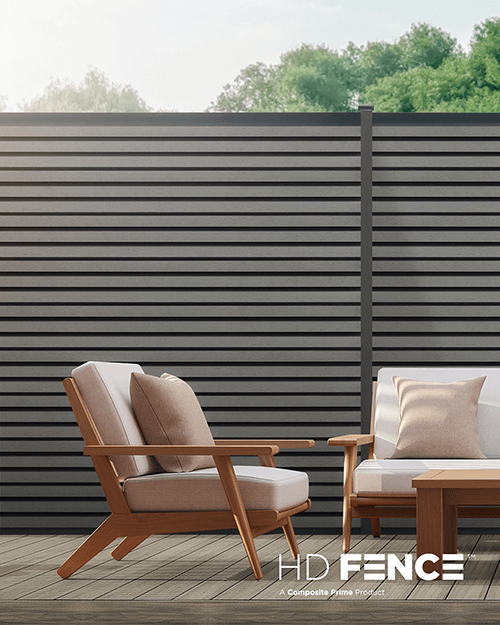Installing composite decking
Composite decking care begins at installation. In order to get the most out of your composite decking boards, it is important to familiarise yourself with some of the key installation principles that will ensure your deck lasts as long as possible.
Tools and supplies
Often, WPC decking boards will be easier to install than traditional wooden boards. The installation manual and fastener system provided with certain decking brands make the installation that much simpler. As for other tools, typically, composite decking materials can be cut using traditional woodworking machinery. You can use a saw designed for wood which has a fine-tooth blade. Make sure to read and follow the manufacturer’s instructions to the letter.
Before carrying out any DIY or building work, you should take all the necessary precautions such as wearing a dust mask, safety eyewear, and gloves.
Before installation
If you opt to DIY your decking boards installation, there are a few considerations to keep in mind. The first thing on your agenda should be the spacing of the boards. While WPC boards are less susceptible to water retention and rot than timber, they are not completely free of environmental influences. Temperature fluctuations will impact wood-plastic composite decking, making the composite material expand in hotter weather and contract in the cold. This means that you should leave enough space between the boards to accommodate their expansion. Ideally, you should leave your decking boards outside for at least 24 hours prior to installation. This allows them to acclimatise to the temperature and weather conditions before you begin work. It is preferable to install the boards in warm temperatures, rather than cold, to make sure that any potential expansion is accommodated. You should refer to the manufacturer’s gapping requirements when deciding how much space to leave between the boards. You should also refer to the guide to check your decking boards’ spanning requirements. The expansion on composite occurs end to end.
Composite decking foundation
An existing patio or concrete base can be used as the foundation for your deck. If using a concrete base for your composite decking, you should ensure that the concrete is at least 10cm thick. It should also have a sufficient slope to allow water to run away from your finished deck and not pool at the base. Lastly, you should measure the area so that you can cut your decking boards to size later.
If you’re planning to lay the deck over the lawn, mark out the desired area, then dig to a depth of 5cm. Cover the ground with landscaping fabric and add gravel. For especially soft ground, place paving stones in each corner and halfway along where each joist will be, as this will help preserve the deck. If you’re looking to ensure the longest possible life for your deck, installing it over soft ground is not recommended.
Building the WPC or timber frame
You can use either wood-plastic composite or timber joists to build the frame for your deck. Other materials are also available but tend to come at a higher cost. Bear in mind that, as with boards, a WPC frame will expand and contract with temperature fluctuations. If both the deck and the subframe are moving the structure warps and loses its shape over time. For this reason, a timber frame is recommended.
In the case of the subframe, timber is the cheapest material and easiest to work with. Make sure to use good quality timber such as C24.
After constructing your composite deck’s timber subframe, it is time to mark out the position of the timber joists. Their positioning will be dependent on the decking design you have chosen. Consult the composite decking manufacturer if unsure. Measure and mark out the positioning of your joists on the external frame. Once you know how many joists you need, measure and cut accordingly.
Should you use joist tape for your timber joists?
Of course, using timber joists with composite decking does have the disadvantage of the joists being more porous and susceptible to water damage, mould and mildew. To avoid these problems, you may want to consider using joist tape. The tape serves to protect your frame, similar to how the wood-plastic composite skin of some boards protects the deck itself.
You can purchase the tape along with your composite decking boards and either wrap the joists or lay a strip across the top and edges of the timber. If you are planning on using joist tape, ensure that you use our HD Protect tape as using an alternative could invalidate your warranty.
Composite decking clips
There are several different types of clips that may be used within one decking installation, including starter clips, board clips and, if you’re using a wood-plastic composite frame, angle brackets. If you’re using timber joists, the latter will not be necessary. Be sure to use only the manufacturer recommended clips, otherwise you risk voiding your composite decking’s warranty.
Additional guidance on installing composite decking
The most important thing to remember is to thoroughly read the manufacturer instructions before embarking on a DIY composite decking installation. If in doubt, contact your decking supplier. With proper installation, you will minimise the need for upkeep and maintenance and ensure that your deck can outlive its warranty with no issues or addition.













